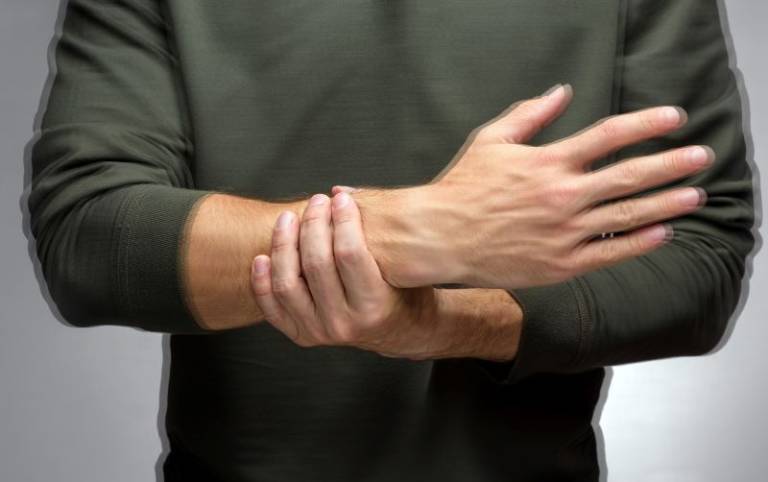Symptoms of the neurological movement disorder, dystonia, which include muscle spasms, twisting of the body and tremors, arise from an impairment in spinal cord function, finds a new study in mice by UCL researchers.

Many neurological conditions that involve involuntary muscle contractions have long been considered as diseases of the brain. However, both the brain and the spinal cord contain many nerve cells associated with movement.
The research, published in Science Translational Medicine, used state-of-the-art mouse genetics to distinguish whether the brain or spinal cord was responsible for the disorganisation of movement experienced by dystonia patients.
Focusing on the most common inherited form of dystonia called DYT1, UCL scientists confined a genetic mutation to the spinal cord of the mice, while sparing nerve cells in the brain. They discovered that the mice consequently developed signs of dystonia that were remarkably similar to those seen in people with the condition.
The researchers also observed how specific nerve cells in the spinal cord were affected through the course of the disease.
The team hope that their findings will help towards the development of new treatments.
Corresponding author, Professor Rob Brownstone (UCL Queen Square Institute of Neurology), said: "We take our ability to move for granted. However, some conditions - such as dystonia - can affect both movement and quality of life.
"Until now, research on how neurological diseases impact nerve cells in the spinal cord has been scant. But it is crucial to understand the origins of disease in order to be able to treat them correctly.
"We hope that our findings will provide a key first step towards the development of new treatments for dystonia."
Dystonia is a potentially disabling condition that can impact both physical and emotional wellbeing. It can affect various parts of the body, including the vocal cords, neck muscles and fingers and is considered the third most common movement disorder behind essential tremor and Parkinson's disease, affecting at least 100,000 people in the UK alone.
While the exact incidence rate remains unknown as many cases go undiagnosed, DYT1 dystonia is estimated to affect about 25 in 100,000 people.
Lead author, Dr Amanda Pocratsky (UCL Queen Square Institute of Neurology) said: "There is no cure for dystonia, and progress towards finding one has been prevented by a lack of preclinical models that develop the movement disorder. By focusing on the nervous system's final common pathway for producing movement - spinal motor circuits - we have developed a preclinical model that imitates the human condition. From this work, we have a newfound entry point into investigating the complex changes in the body that cause the disease and a potential target for developing new therapeutic interventions.
"Spinal circuit dysfunction is rarely considered in movement disorder research, but the symptoms of these conditions are largely produced by neurons resident within the spinal cord. To this end, while DYT1 dystonia is a relatively rare condition, our findings could also be important not only for the dystonia community but for forming new treatment strategies for other neurological disorders that similarly affect the movement of limbs."
This research was directly supported by Wellcome, the Medical Research Council, and the European Molecular Biology Organisation.






